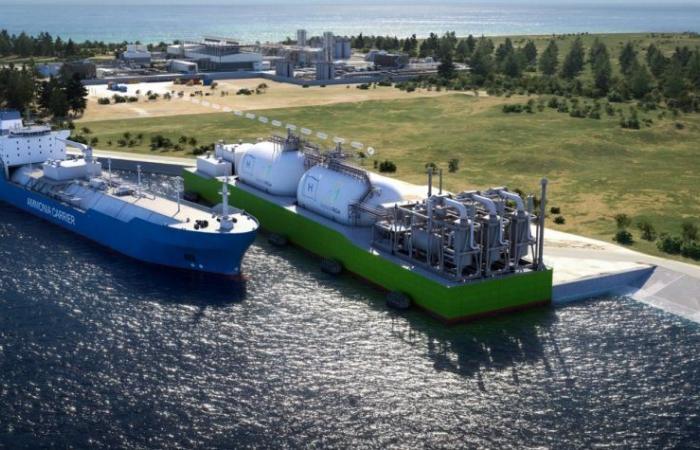The first floating plant for the import of ammonia and its transformation into hydrogen will be built in Lubmin, Germany.
The project, called H2-Import-Terminal Lubmin, is the subject of a collaboration agreement just signed between the Norwegian shipping company Höegh-LNG, specialized in the transportation and management of liquefied natural gas, and Deutsche ReGas, an energy company that manages the only private LNG import terminal currently active in Germany.
The new H2 import facility, which will be the first of its kind in the world (floating and capable of carrying out the ammonia cracking process on board), will come into operation during 2026 and will be able to generate approximately 30,000 tonnes of hydrogen per year, which will be fed directly into the national hydrogen pipeline network currently under construction, using the existing Deutsche ReGas entry point in Lubmin (up to now used for liquefied natural gas).
In the framework of this project, Höegh LNG will provide its proprietary offshore ammonia cracking technology, while Deutsche ReGas will provide the terminal’s land-based facilities and coordinate all development phases of the initiative, including the permitting process and the commercialization of the terminal’s import capacity.
Meanwhile, still in Germany (specifically in Stade, Lower Saxony), construction has officially begun on the Hanseatic Energy Hub, which will be built by Técnicas Reunidas (together with partners FCC and Enka) and managed by the Spanish company Enagás.
This is a land terminal for the import of liquefied natural gas, which will become operational in 2027 and will be ammonia-ready from the very beginning, and therefore ready to also import ammonia.
And in fact, all customers who have already purchased LNG import capacity – including the German energy companies EnBW and SEFE and the Czech ČEZ – have the possibility of ‘switching’ their contracts from natural gas to green energy carriers based on H2.
In Great Britain, Lloyd’s Register has signed a Memorandum of Understanding (MoU) with H2Terminals Limited and its partners HiDROGEN and D3IM to study the feasibility of a hydrogen import terminal in the country.
In particular, the project involves the creation of an offshore infrastructure, approximately 100 km from the coast, where hydrogen will be produced using renewable energy from the sun, wind and waves. The H2 will then be liquefied and transported by ship to land, up to a dedicated terminal located in the Thames estuary area. The energy carrier will then be further transferred onto floating barges that will transform it into electrical energy (which can in turn be stored on board thanks to the presence of batteries).
The MoU just signed includes the assessment of the technology to be used, the development of the asset design, the qualification of the containment system and the offshore hydrogen production system. In addition, as part of the collaboration started between Lloyd’s Register and H2Termuinals Limited, an insurance coverage program will also be defined for the offshore hydrogen production plant and for the vessels that will have to transport the H2 to land.






